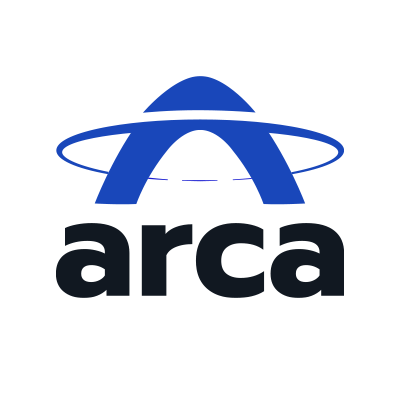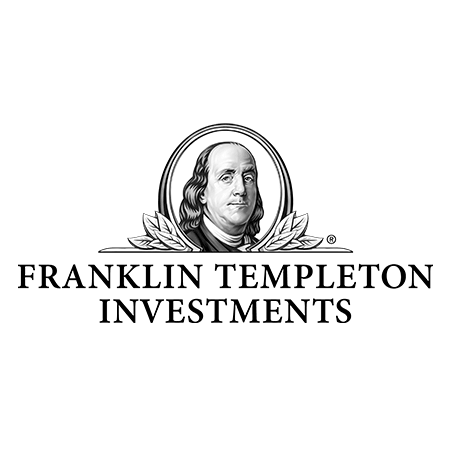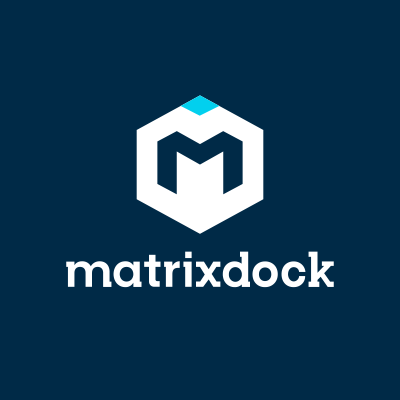U.S. Treasury bonds become the main driving force in the RWA track; how do players with different genes innovate?
Author: flowie, ChainCatcher
The ever-popular RWA covers a wide range of areas, encompassing how different asset classes such as stablecoins, bonds, stocks, and real estate integrate with on-chain solutions. Previously, we summarized the seven major subfields of the RWA track and representative vertical players in our RWA series article “RWA Map: Overview of Progress of 10 Major Projects and Summaries of 20 Early Projects”.
However, looking at the overall warming of the RWA track this year, it is primarily driven by U.S. Treasury bonds. Projects with high TVL in the RWA space are mostly related to U.S. Treasuries, and the significant increases in COMP, MKR, and other DeFi protocols' RWA layouts are also mainly focused on U.S. Treasuries. The introduction of U.S. Treasuries on-chain is currently the most typical case in RWA.
As for why U.S. Treasuries have become the backbone of this round of RWA narratives, we have repeatedly mentioned in previous articles that one direct logic is that the continuous interest rate hikes by the Federal Reserve have led to rising U.S. Treasury yields, prompting many DeFi protocols or crypto investors to seek the risk-free high-yield returns from U.S. Treasuries.
But aside from the very clear demand for returns, a reality pain point that we rarely mention is that the investment threshold for U.S. Treasuries has always been very high. Even for U.S. citizens, the cumbersome KYC and account opening processes exclude most people, not to mention non-U.S. citizens. At this point, how to combine off-chain U.S. Treasuries with on-chain solutions in a compliant manner, lowering the investment threshold for U.S. Treasuries and bringing the returns to on-chain users, is a practical problem that many projects face, which has real value but is also filled with obstacles.
Bringing U.S. Treasuries on-chain is no easy task. As Kyle Samani, co-founder of Multicoin Capital, said, "This is a standard issue; you need to get all relevant parties, including issuers, underwriters, fund managers, auditors, buyers, sellers, brokers, banks, etc., to agree on the new standards."
Not only the tokenization of U.S. Treasuries but also the tokenization of other bond markets, stocks, real estate, and other assets cannot avoid the participation of many government regulators and intermediaries. The compliance issues and legal risks involved are quite complex.
We might start by examining the most representative and relatively easier standardization of bringing U.S. Treasuries on-chain to understand the processes and real obstacles in achieving RWA, as well as how the players in this track innovate to lower user access thresholds and increase liquidity.
How Different Genetic Players Bring U.S. Treasury Returns On-Chain?
The seemingly sudden emergence of U.S. Treasuries on-chain has actually been brewing for a long time. In addition to tokenized U.S. Treasury funds from asset management companies, new on-chain U.S. Treasury protocols are also dedicated to tokenizing U.S. Treasury returns. Moreover, stablecoin protocols indirectly bring U.S. Treasury returns to crypto users through asset reserves. According to statistics from the RWA data research platform rwa.xyz, the tokenized U.S. Treasury market has now surpassed $680 million (excluding indirect introduction methods), with an average yield to maturity of over 4% on-chain.

1. Early Movers in Asset Management: Arca, Franklin Templeton, WisdomTree
Traditional asset management companies may be among the earliest players targeting the tokenization of U.S. Treasuries. In 2020, digital asset management company Arca, through its innovation department Arca Labs, finally registered a fund investing in U.S. Treasury bonds with the SEC after more than two years and nine submissions. This fund is also referred to as a BTF (Blockchain Transfer Fund) and is regulated under the U.S. Investment Company Act of 1940.
Arca Labs can convert shares of this U.S. Treasury fund into tokens called ArCoin, which are recorded on Ethereum. When users purchase ArCoin, it is equivalent to subscribing to Arca Labs' U.S. Treasury fund. The pricing of ArCoin is based on the fund's net asset value.
Among them, the ultimate record ownership of ArCoin is maintained by a transfer agent, which is regulated by the SEC and operated by Securitize, a blockchain company focused on real-world asset tokenization. Currently, investors who have completed Securitize's KYC/AML process or possess a Securitize ID (both U.S. and non-U.S. investors) can purchase ArCoin, and Arca only accepts subscriptions in U.S. dollars.
Franklin Templeton, the largest publicly traded fund management company with over a trillion dollars in assets under management, also launched the government money market fund FOBXX on the Stellar blockchain back in April 2021. FOBXX is the first U.S. registered mutual fund to use a public blockchain for transaction processing and recording share ownership, regulated under the U.S. Investment Company Act of 1940. From its registration, management, and disclosure aspects, Franklin Templeton provides one of the most strictly regulated products. FOBXX is also currently the largest player in the tokenized U.S. Treasury space.
The transfer agent for FOBXX maintains official records in a bookkeeping format, with the blockchain serving only as a secondary record. In April of this year, FOBXX also expanded to Polygon.
According to the FOBXX official website, it invests at least 99.5% of its total assets in securities fully collateralized by the U.S. government, cash, and repurchase agreement securities or cash. Each share of the FOBXX fund is represented by a "BENJI" token, which is pegged to $1. FOBXX distributes the returns from U.S. Treasuries to BENJI holders, who are the shareholders of the FOBXX fund, through its developed application, the Benji Investments app.
The target market for BENJI is U.S. investors, and both retail and institutional investors can participate. Investing in FOBXX requires having a dedicated on-chain wallet for transactions (created by the fund's transfer agent during account opening) and completing purchases and other transactions through the Benji Investments App, with the private keys related to the investor's wallet held by the fund's transfer agent. Currently, investors are also unable to use stablecoins to purchase BENJI; the BENJI tokens purchased are merely a receipt for receiving U.S. Treasury returns, with little leverage effect.
Currently, FOBXX's total asset size is approaching $300 million, with the Stellar Foundation injecting $20 million into it, and FOBXX's annualized interest rate over the past year has been 3.75%.
One of the major ETF providers in the U.S., WisdomTree, has also made significant strides in the tokenization of U.S. Treasuries. In January 2022, WisdomTree announced the launch of a new fintech product directly aimed at consumers. This product, called "WisdomTree Prime," aims to provide U.S. investors with selected investment opportunities ranging from government debt to cross-asset classes, with fund shares represented as tokens on the blockchain.
In December, the SEC approved WisdomTree's 10 digital fund portfolios. Like Arca's products, these funds are products under the Investment Company Act of 1940, issued on the Stellar and Ethereum blockchains, with the transfer agent maintaining official records in a bookkeeping format, and the blockchain serving only as a secondary record. Investors also need to conduct purchases and other transactions through the WisdomTree Prime mobile app they launched.

From WisdomTree's official website, the related U.S. Treasury products under WisdomTree Prime include short-term Treasury digital funds (WTSYX), floating rate Treasury digital funds (FLTTX), 3-7 year Treasury digital funds (WTTSX), 7-10 year Treasury digital funds (WTSTX), long-term Treasury digital funds (WTLGX), and TIPS digital funds (TIPSX). Among them, the short-term Treasury digital fund (WTSYX) manages approximately $1 million in assets. However, this product is still in testing and has not been opened to a wider audience.
According to WisdomTree, the target users of WisdomTree Prime are not institutional crypto investors but U.S. retail investors. Currently, Stride and Galileo are their payment partners, allowing users to pre-fund their Prime accounts via ACH transfers, with the returns stored at State Street Bank. Additionally, the WisdomTree Prime Visa debit card will initially be offered as a virtual card, usable with Apple Pay, Google Pay, and Samsung, with a physical debit card to be released shortly thereafter.
Overall, these traditional financial asset management companies operate almost uniformly in the tokenization of U.S. Treasuries, using a fund share tokenization approach. Holding fund token shares and investing in the fund have the same requirements; holders of fund share tokens need to register their addresses as whitelisted for the fund, and addresses not on the whitelist will not execute transactions. Investors generally need to be U.S. residents, and only fiat transactions are supported, with no support for stablecoins or other cryptocurrencies. The blockchain mainly serves as a secondary record, while the official records of the fund's transfer agent are still managed through bookkeeping.
In other words, while these asset management companies' explorations in the tokenization of U.S. Treasuries are quite strict in compliance, they merely apply blockchain technology for bookkeeping, with little connection and liquidity to the crypto world’s DeFi.
It is worth mentioning that Compound founder Robert Leshner announced the establishment of a new company, Superstate, on June 29, which, according to its submitted application, plans to operate in a manner similar to the traditional financial institutions' fund share tokenization. However, Robert Leshner has a background related to the U.S. Treasury Department, and whether this operational method will bring new gameplay is also worth looking forward to.
2. "Riding the Wave" Stablecoin Players: MakerDAO, Frax Finance
Compared to the aforementioned asset management companies, stablecoin protocols like Maker and others indirectly obtain U.S. Treasury returns by utilizing treasury assets.
Recently, MakerDAO has been discussed a lot for its layout in RWA, continuously increasing its investment in U.S. Treasury assets this year. As one of the earliest DeFi protocols to layout RWA, MakerDAO did not initially invest directly in U.S. Treasuries; it first explored investments in solar energy, real estate, and other RWA asset allocations, but ultimately did not proceed due to the significant default risks associated with these assets.
For MakerDAO, diversified asset allocation is not only about considering substantial growth in returns but also reduces reliance on a single asset, lowering many single-point risks. Previously, nearly half of MakerDAO's asset reserves came from the stablecoins in the PSM (Primary Stablecoin Module), with nearly 70% being USDC. This means that MakerDAO had to bear the risk of USDC de-pegging even without returns.
In contrast, U.S. Treasuries are almost risk-free interest rate products, and due to the continuous rise in U.S. Treasury yields amid interest rate hikes, MakerDAO's layout in U.S. Treasuries is almost a natural progression. According to official data, as of May, MakerDAO's total investment in the RWA portfolio reached 2.34 billion DAI, primarily used to purchase U.S. Treasuries. According to Dune Analytics, over half of MakerDAO's income comes from interest-bearing RWA assets.
With substantial growth in income, MakerDAO has also raised the DAI deposit interest rate multiple times this year, first from 1% to 3.49%, and recently directly to 8%, exceeding the 5% risk-free interest rate of its underlying asset, the U.S. dollar, with the aim of expanding the usage scale of DAI and DSR.
Recommended Reading: “How Did DAI's 8% Excess 'Risk-Free Rate' Come About?”
It is worth noting that the way MakerDAO allocates U.S. Treasury assets does not use asset issuance platforms but instead holds U.S. Treasury assets through a trust legal structure. According to the MIP65 proposal, MakerDAO entrusts Monetalis to design the overall legal framework, with Monetalis based in the British Virgin Islands (BVI) implementing the on-chain and off-chain connection through a trust legal structure.

Through this trust structure, MakerDAO can first convert reserve assets into fiat currency, then have a custodian bank purchase U.S. Treasury ETFs to obtain corresponding returns, and then distribute the protocol's income to DAI holders by raising DAI's deposit interest rate.
Currently, besides MakerDAO, the algorithmic stablecoin protocol Frax Finance has also been exploring the adoption of U.S. Treasuries and other RWA assets. Frax Finance and MakerDAO previously faced a similar dilemma regarding excessive reliance on USDC as collateral; earlier this year, the de-pegging of USDC caused both DAI and Frax to drop below $0.90, further pressuring Frax Finance to strengthen reserves and reduce reliance on USDC.
Earlier this year, Frax Finance revealed in a media interview that its 2023 plan included opening a Federal Reserve master account (FMA) to directly hold U.S. short-term bonds, but this plan was seen by many crypto KOLs as almost "fantastical," and Frax Finance has not disclosed any follow-up progress on this.
In the upcoming Frax V3 version, some progress regarding reserves of U.S. Treasuries and other RWA assets has been revealed. In July, Frax Finance founder Sam Kazemian mentioned the idea behind this upgrade during community interactions: FRAX has operated under the assumption of not de-pegging from USDC since its inception. However, when USDC de-pegged, the redemption value of 0.95 USDC + 0.05 USD FXS was insufficient to reach $1. Therefore, FRAX v3 will change this situation through many new AMOs and features pegged to "sovereign dollars."
On August 7, the founder of Frax Finance proposed "FinresPBC as the off-chain RWA partner for FRAX v3." FinresPBC is a stablecoin technology service provider, and the proposal mentions that FinresPBC will provide services for the Frax protocol, including holding U.S. dollar deposits, issuing and redeeming Paxos USDP and Circle USDC stablecoins, as well as holding, purchasing, and selling U.S. Treasuries. Each month, FinresPBC will publicly release a complete asset inventory and report of all reserves held for the Frax protocol.

However, regarding the method of introducing U.S. Treasury returns through trust law, crypto KOL @kenjisrealm, who focuses on RWA research, believes that there are still risks such as asset default, agent risk, and regulatory risk. Especially, the Corporate Transparency Act in the U.S. will come into effect in 2024, requiring even DAOs to disclose actual controllers and influential stakeholders, which conflicts with the existing RWA framework of MakerDAO.
However, in “RWA Talks: Compliance, Segmented Tracks, and Future Prospects,” dForce founder Min Dao stated that if MakerDAO establishes a trust to hold U.S. Treasury assets, it would at least reduce operational risks compared to indirect methods like through Circle. More importantly, this model could impact the entire stablecoin market landscape, as decentralized stablecoins may have an opportunity to overtake. This is because decentralized stablecoins, after introducing U.S. Treasury interest, become more attractive than centralized stablecoins. In terms of both yield and programmability, they can flexibly adjust the risk composition of underlying assets.
3. Seeking to Lower Investment Thresholds: Ondo Finance / Flux Finance, Matrixdock / T Protocol
Whether traditional financial asset management companies are tokenizing U.S. Treasuries or stablecoin protocols are indirectly bringing returns to their stablecoin users through trusts, their tokenization of U.S. Treasuries lacks market circulation and is essentially a purely off-chain model. The limitations of this model are also quite evident; the tokenization of U.S. Treasuries by traditional asset management and crypto asset management companies mainly targets non-crypto investors in the U.S., requiring strict KYC, and subscriptions generally need to be made through dedicated apps, with no support for cryptocurrency subscriptions, leaving the investment threshold still relatively high. Meanwhile, stablecoin protocols only limit returns to users holding their stablecoins.
For crypto users, the pain point remains how to invest more idle crypto assets in U.S. Treasuries with a low threshold. For DeFi projects, they need to think about how to distribute U.S. Treasury returns to crypto users in a compliant and low-threshold manner.
Currently, the RWA research platform rwa.xyz, in its latest report on tokenized U.S. Treasuries, lists DeFi protocols such as Ondo Finance / Flux Finance, Matrixdock / T Protocol, Maple, Backed, Swarm, etc., exploring the tokenization of U.S. Treasuries. However, due to compliance requirements, most tokenization protocols for U.S. Treasuries require KYC, and there are significant regional restrictions, which means they face limitations on issuance scale.

Compared to traditional asset management companies' tokenization of U.S. Treasuries, their compliant approach to bringing U.S. Treasuries on-chain is different, and they also support the use of stablecoins, making operations relatively more convenient. The following is a brief analysis of tokenization protocols for U.S. Treasuries with relatively higher TVL that have explored ways to bypass KYC.
Founded in 2021, Ondo Finance has team members with rich backgrounds from institutions and DeFi protocols such as Goldman Sachs, Fortress, Bridgewater, and MakerDAO. Earlier this year, Ondo Finance announced the launch of a tokenized fund to provide institutional investors with opportunities to invest in U.S. Treasuries and investment-grade bonds.
Compared to the cumbersome registration process of mutual funds, Ondo Finance chose to adopt a fund exemption issuance method, but this means higher requirements for investors, needing to meet the SEC's definition of accredited investors and qualified buyers, i.e., individuals or entities investing at least $5 million. Accredited investors can invest using USDC or U.S. dollars, with USDC converted to U.S. dollars through Coinbase and then used to purchase U.S. Treasury ETFs through Clear Street, a broker providing bulk brokerage platforms for institutional investors. The resulting returns are distributed to institutional investors in a tokenized manner.
This investment threshold remains high, but the lending protocol launched by Ondo Finance, Flux Finance, allows ordinary investors to indirectly obtain U.S. Treasury income. Flux Finance allows holders of OUSG to stake OUSG to borrow stablecoins. As a provider of stablecoins in the Flux Finance lending pool, users can obtain U.S. Treasury income indirectly without KYC. Currently, Flux Finance has a total supply of nearly $40 million.
In contrast to the fund exemption issuance method, Matrixport's on-chain bond platform Matricdock has chosen to establish a Special Purpose Vehicle (SPV) as the issuer for purchasing and holding U.S. Treasuries. Matricdock has launched a product based on U.S. Treasuries called the Short-term Treasury Bill Token (STBT), which, according to compliance regulations, still requires customers to undergo KYC and register their addresses on a whitelist, with a minimum investment requirement of $10, and does not provide services to clients from regions such as mainland China, Singapore, the U.S., and Canada.
Similar to OUSG, STBT allows users to invest using stablecoins. STBT transfers stablecoins into fiat currency through its issuer for the purchase of underlying Treasuries by a "third-party custodian," but it has not disclosed who the "third-party custodian" is, unlike Ondo Finance.
It is worth mentioning that in exploring ways to lower investment thresholds, Matrixport has launched an unpermissioned U.S. Treasury investment protocol, T Protocol. Compared to Ondo Finance, which indirectly introduces U.S. Treasury returns to crypto users through the lending protocol Flux Finance, T Protocol achieves unpermissioned U.S. Treasury investment by wrapping the STBT issued by MatrixDock.
According to HashKey's report “HashKey: Discussing the Tokenization of RWA Using U.S. Treasuries as an Example,” T Protocol's TBT token is a wrapped version of STBT, where investors deposit stablecoins into T Protocol, which then mints TBT. Once it accumulates $100,000 USDC, it entrusts partners to purchase STBT. TBT is pegged to $1 and can be redeemed through the protocol, distributing U.S. Treasury returns in a rebase manner. There is also a non-rebase version of TBT called wTBT. HashKey believes that TBT is backed by the protocol's purchase of STBT and the USDC reserves that have not yet been purchased, with T Protocol acting as an intermediary between non-Matrixdock users and Matrixdock. TBT is also a potential competitor to stablecoins.
Conclusion: What Impacts of U.S. Treasury RWA on DeFi Are Worth Noting?
Combining the aforementioned protocols related to bringing U.S. Treasury returns on-chain and some analyses in Mint Ventures' podcast review article “RWA Talks: Compliance, Segmented Tracks, and Future Prospects,” the impacts of U.S. Treasury RWA on the crypto market are mainly twofold:
First, retaining on-chain crypto funds slows down capital outflow. After experiencing a prolonged bear market, many idle stablecoins and other crypto assets find it challenging to locate low-risk and attractive return avenues, while the risk-free returns from U.S. Treasury RWA somewhat fill this demand, slowing down capital outflow from on-chain. From a longer-term perspective, dForce founder Min Dao raised a thought: stablecoins have already tokenized the U.S. dollar, but the native interest of the dollar has not been tokenized. A currency without its own interest cannot become a true currency. When these two are combined, it means we have truly tokenized the complete currency of the U.S. dollar on-chain, which is significant.
Second, the impact on the stablecoin landscape. On one hand, stablecoin protocols like MakerDAO reduce their reliance on centralized stablecoins like USDC through asset allocation in U.S. Treasuries, lowering operational risks while attracting a large number of users to hold their stablecoins with their yields. On the other hand, many U.S. Treasury investment platforms like T Protocol and OpenEden are helping users gain exposure to yield-generating U.S. Treasuries through the issuance of stablecoins, injecting new forces into the competition in the stablecoin market.
Moreover, with the compliance and technical explorations bridging crypto finance and traditional finance in U.S. Treasury RWA, it may provide valuable insights for other RWA assets entering the crypto market.
References:
“An Allocator's Guide to Tokenized Treasuries”
“HashKey: Discussing the Tokenization of RWA Using U.S. Treasuries as an Example”
“RWA Talks: Compliance, Segmented Tracks, and Future Prospects”















